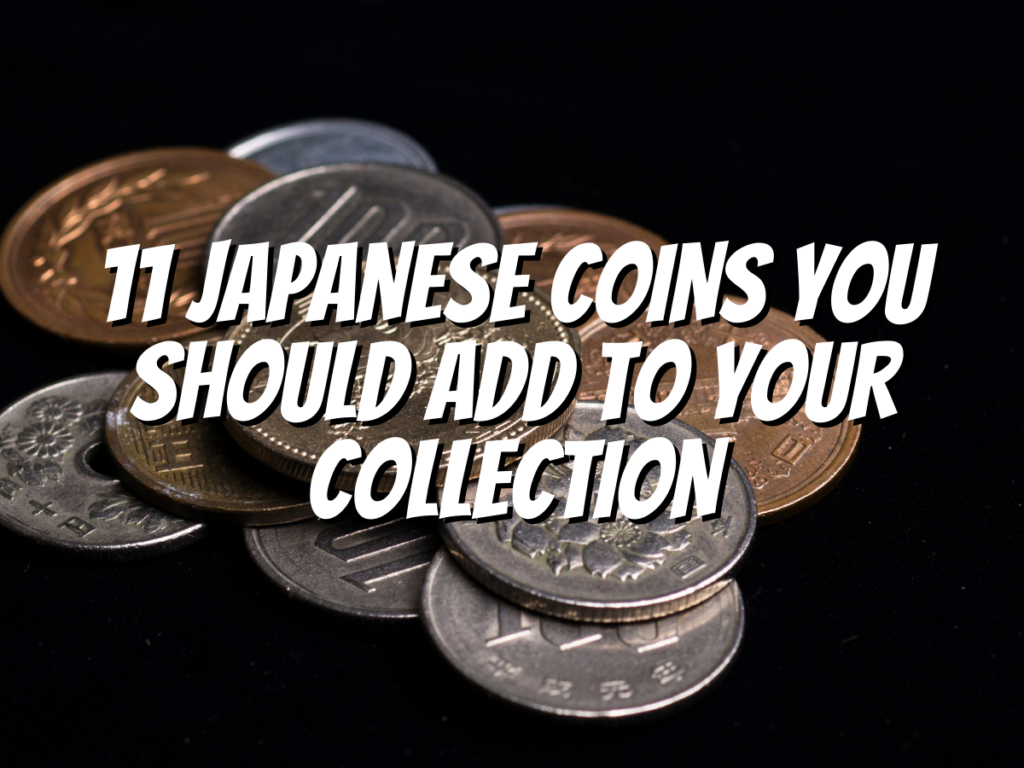Japan is one of the most exciting destinations for coin collectors.
There are many beautiful and interesting coins from Japan, and you can find them on eBay and in some coin shops.
Here are 11 Japanese coins you should add to your collection:
Japanese Coins to Collect:
Hishi Oban (10 Ryo), ND Tensho Era (ca. 1588)
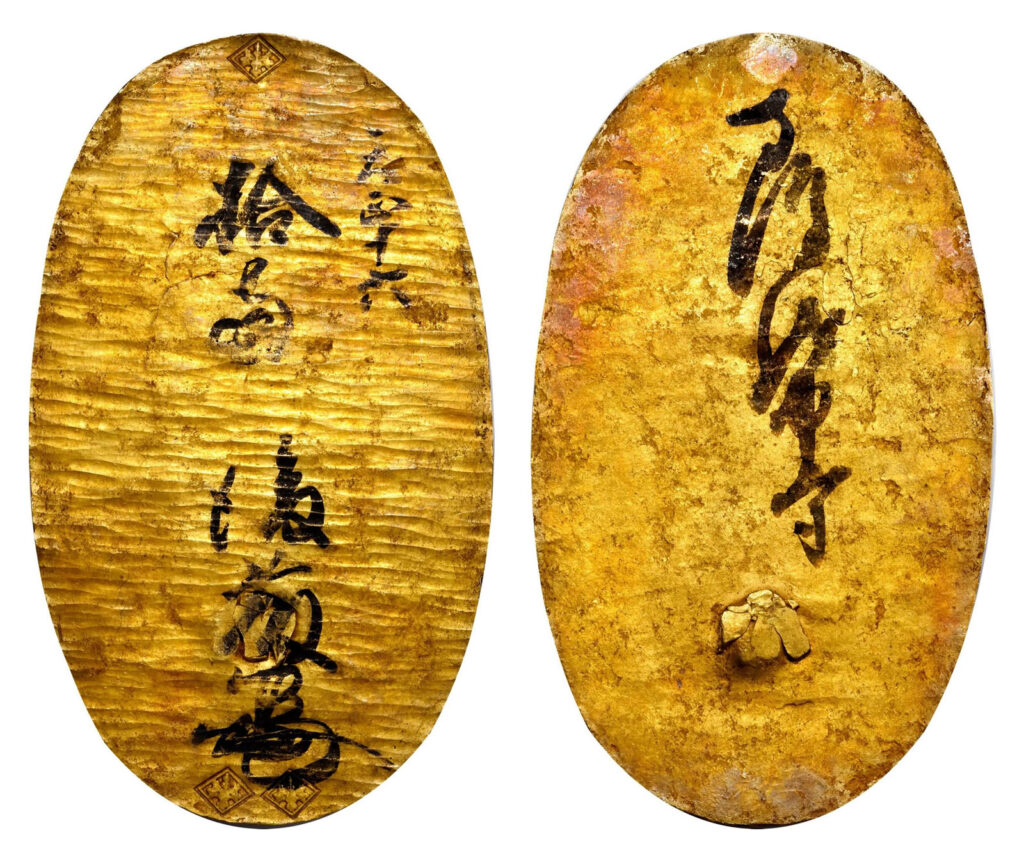
One of the very first Oban coins ever produced is this extraordinary coin. It was created about 1588, during the Tensho era.
Additionally, there are merely six known examples of this variety. Obans, which means “big stamped piece,” were oval gold plates.
Additionally, they were the biggest denomination of the money Tokugawa Ieyasu, the military dictator or “shogun,” introduced.
Three diamond-shaped stamps on the obverse distinguish this Oban from other varieties. Hence, they are referred to as “Kiri stamps.”
Ink signatures appear on both sides. Additionally, numerous characters have been manually etched in the lower left corner of the coin’s obverse (the front).
Given that two other Obans of this type have comparable embellishments, these could be graffiti or have served a more formal purpose.
1870 Japan Pattern Coin Set
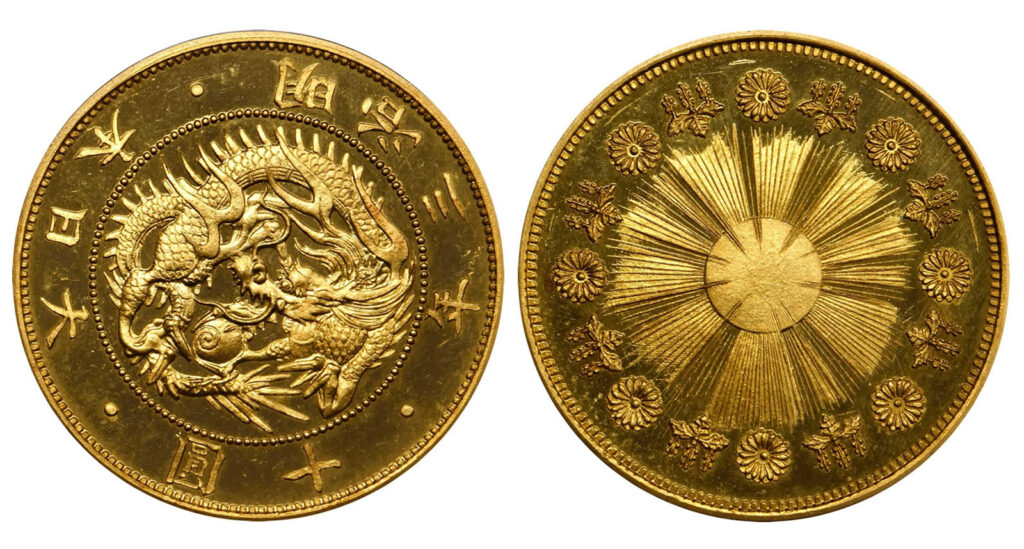
Although Japan has a long tradition of producing coins, the oldest examples sometimes command the highest values.
Records were broken when this collection of eight coins was offered for sale.
And it was from 1870, which is a fairly recent year. The Meiji Dynasty had just restored the empire two years before this.
And the new coins signaled a clear shift in strategy. The feudal era’s ingot-style coins were no longer in use. Instead, round coins of a consistent size entered.
Despite being produced in London, the designs were primarily Japanese.
They were the creations of engraver Natsuo Kano, calligraphy Hyoka Ishii, and artist Tamoo Masuda.
Leonard Charles Wyon converted them into dies in London. How many of the coins were produced has yet to be discovered.
Only two full sets exist as of right present, though. The British Museum has one of those in its collection.
The other was put up for auction in April 2021 in Hong Kong.
Gold 10 Yen Pattern, Year 3 (1870)

For a 10 yen coin, this lovely gold coin has an extremely uncommon pattern.
It’s from 1870 and resembles the coin from the year before. However, this one is bigger, with a diameter of 32 millimeters as opposed to the 1871 model’s slightly less than 30 millimeters.
On one side, a dragon is exquisitely etched, while on the other, there is a sun and a wreath.
The Professional Coin Grading Service or PCGS, independent coin evaluators, assigned it a specimen coin grade.
It is thus superior to a coin in the mint state but not nearly a proof coin in terms of quality.
20 Yen, Year 10 (1877)

This 20 yen coin was produced in 1877, the tenth year of Emperor Meiji’s reign.
And even though it is almost 150 years old, it is in wonderful shape. Therefore, the PCGS assigned it an MS (mint state) 64 rating.
Additionally, it was emphasized as having a quality almost as fine as a proof coin.
These coins were produced in minimal quantities; they were likely struck for presentation to dignitaries from other countries or high-ranking government officials.
The extraordinary quality of this coin, with its sharp detail, broad edges, and highly reflective fields, is likely due to that.
Naga Oban (10 Ryo), ND Tensho Era (ca. 1573-1591)
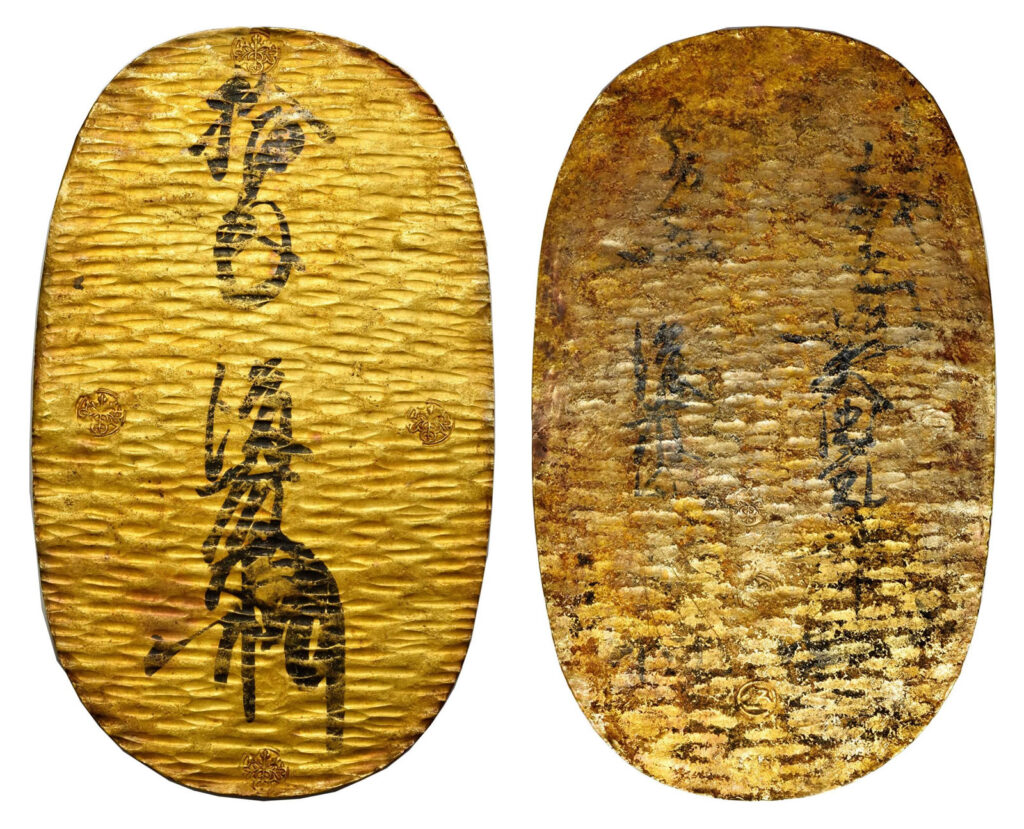
This is yet another Oban from the Tensho era, which is the 16th century.
It is an uncommon coin, and even more unusual for it to be offered for sale outside of Japan.
Collectors were ecstatic when this one was put up for sale at a Hong Kong auction in 2021.
Oban (10 Ryo), ND Genroku Era (ca. 1695-1704)

This later gold Oban was produced between 1695 and 1704, during the Genroku era.
It has a recognizable ovoid shape and an inked signature on both sides.
In contrast to the deep, thick lines on most Obans, this coin is adorned with shallow, thin lines that cross it.
More graffiti is on the back, and the signature is almost finished. Both the Kiri stamps and the control marks are crooked.
Oban (10 Ryo), ND Tensho Era (ca. 1573-1609)
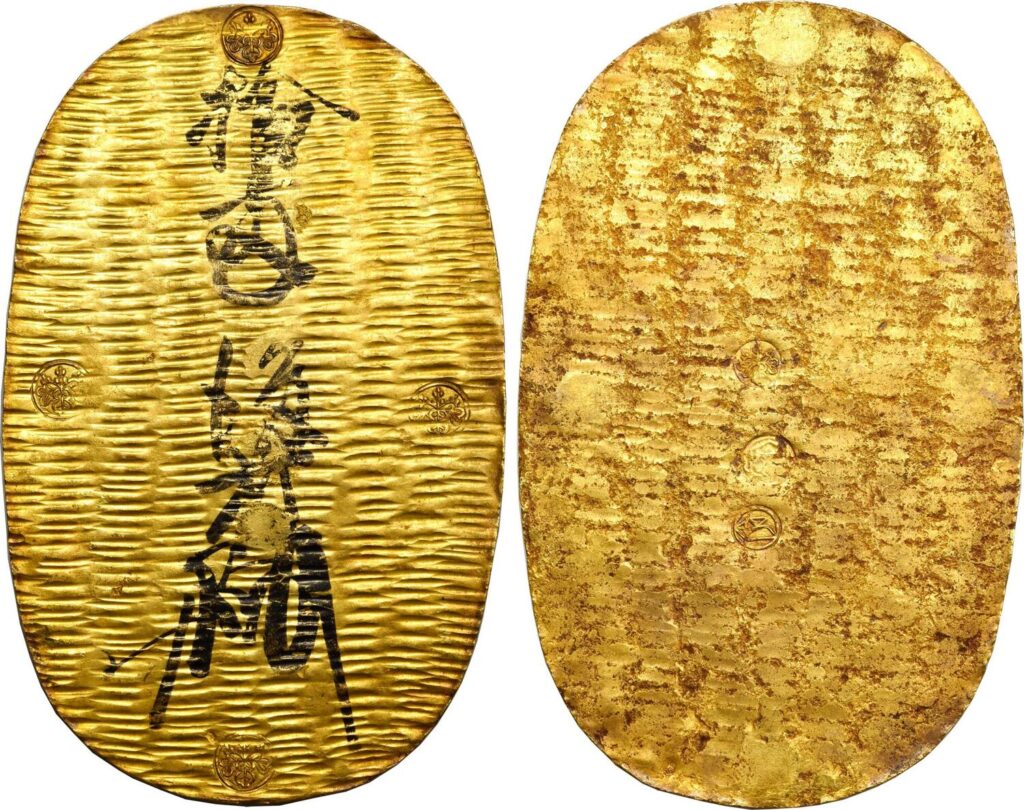
This Oban is a pre-modern illustration from the Tensho era. It has hammer marks all over it, much like other Obans.
However, unlike most specimens of this age, where they are often positioned at random, in this instance, they are organized into columns.
In actuality, the hammer marks and the signature’s styles are avant-garde.
However, they mirror those found on Obans produced during the Keicho era, which lasted from 1596 to 1615, more closely.
2 Yen, Year 13 (1880)

This 2 Yen currency was minted in 1880, the thirteenth year of Emperor Meiji’s rule.
Because so few coins were produced that year, survivors were in high demand.
Additionally, of all the gold coins made that year, 2 yen coins are the rarest.
Therefore, this one is likewise a highly alluring illustration—the elevated portions of the design contrast with the smooth, reflecting fields by using frost.
Oban (10 Ryo), ND Keicho Era (ca. 1601-95)
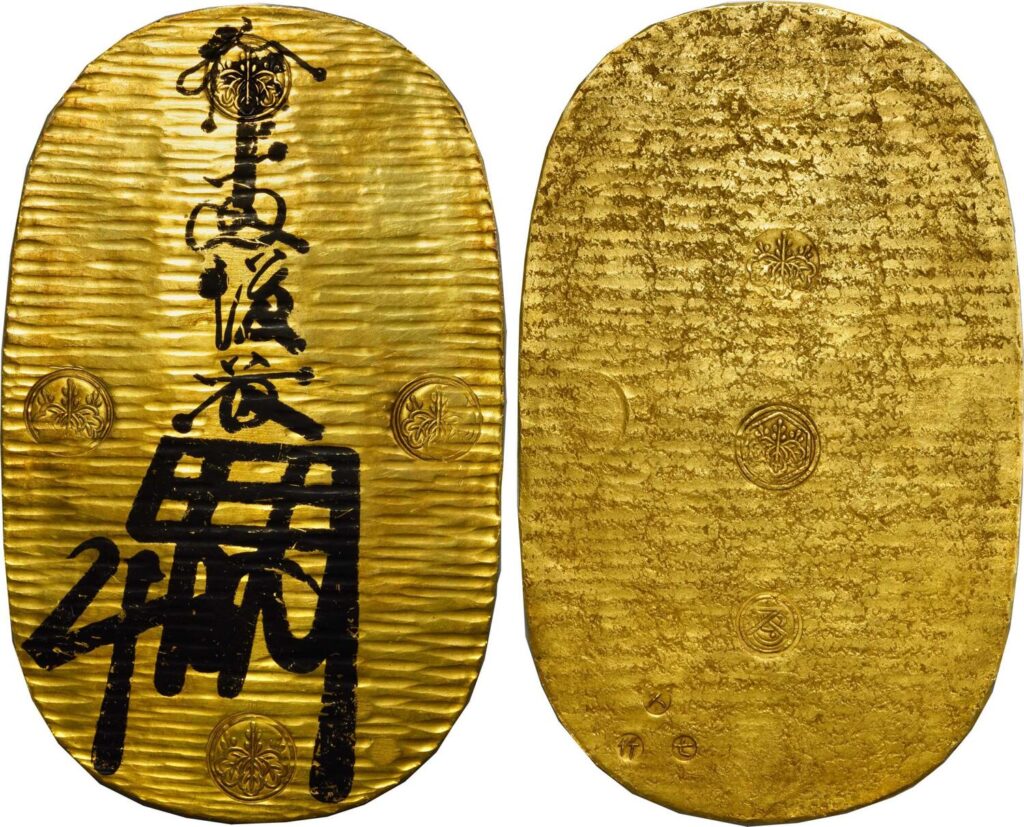
This Oban was made in the 17th century during the Keicho era. There are seven tidy columns of hammer marks on it.
Both the Kiri and control markings need to be corrected. The control markings are also nicely matched on the flip side, making this quite a unique specimen.
Meireki Oban (10 Ryo), ND Keicho Era (ca. 1658-95)

Another Oban from the Keicho period. The hammer markings are perfectly placed in seven columns, like other Obans from this period.
In the highest places, the ink signature shows some symptoms of fading.
Uneven Kiri marks, distinct, large control marks, and an additional mark on the reverse are all present.
Sado. Koban, ND
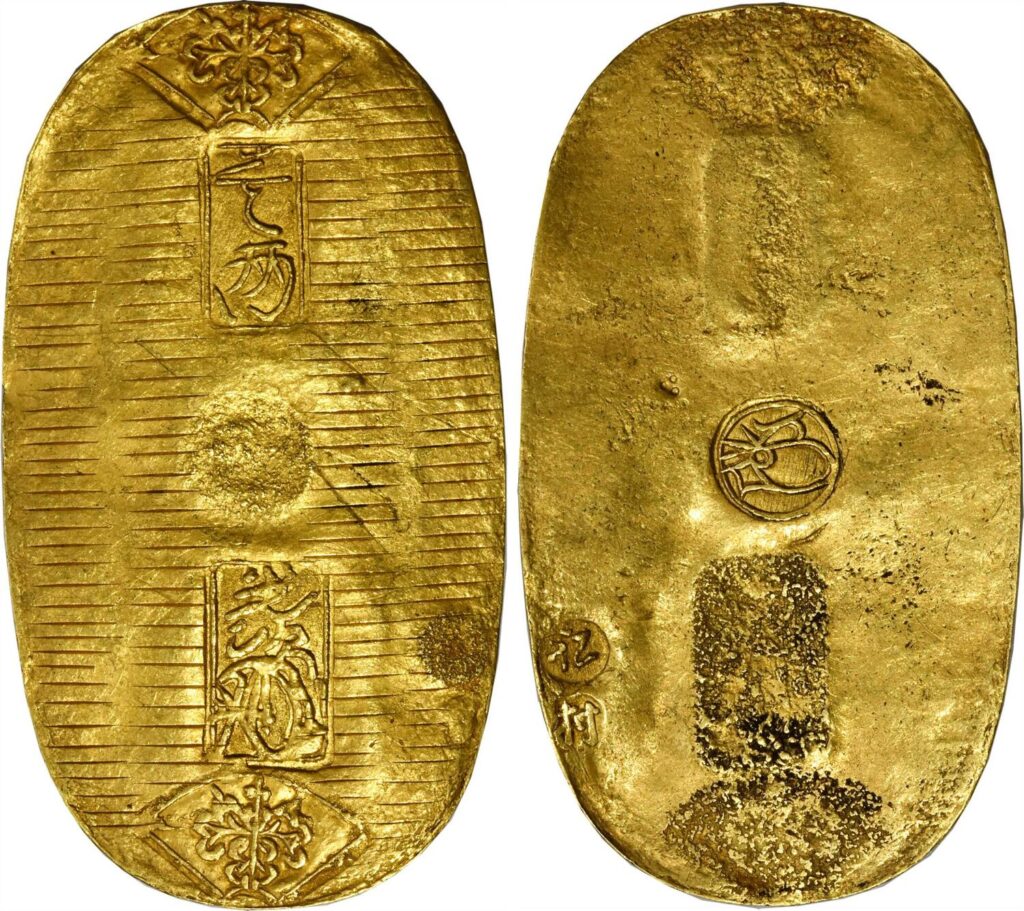
The Koban coin was used during Japan’s feudal era of the Edo. It was a significant component of Tokugawa coinage and was worth one Ryo.
On the island of Sado, gold was mined to create this specimen. As a result, collectors find it to be one of the most sought-after Koban varieties.
Before you go…
We hope you’ve found this list helpful and interesting. Of course, we could have included many other coins worldwide, but these are some of our favorites. We also wanted to give you an idea of what it means to collect coins and how they can be fun and educational. So if you ever get the chance, go out there and see what kind of treasure awaits you!
Check out my next article: “6 Types of Coin Collection You Can Collect.”
Related Articles:

